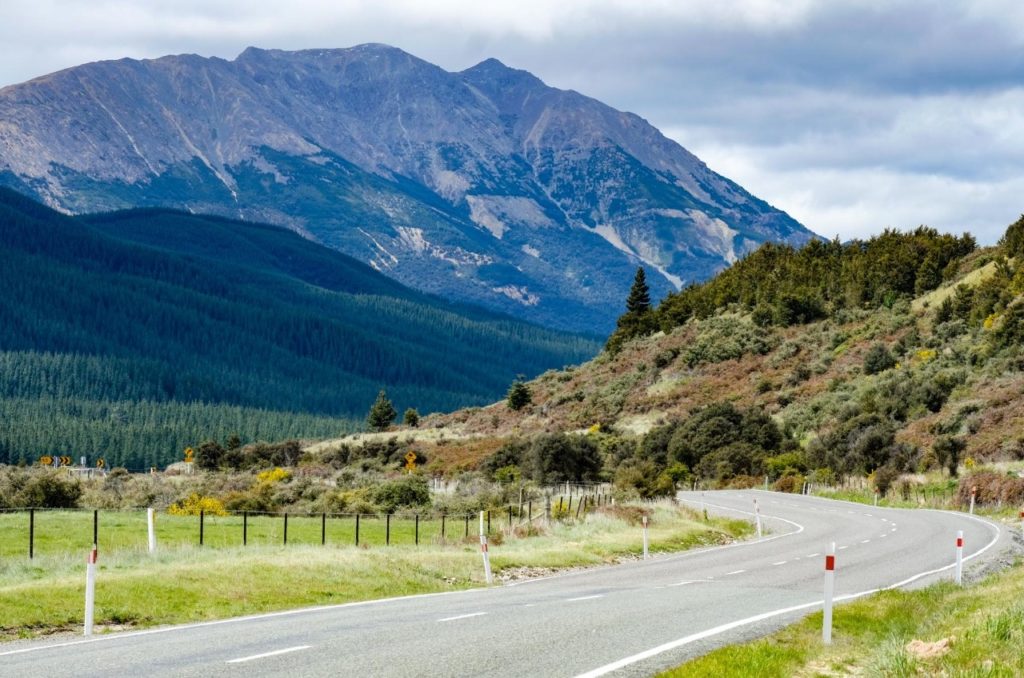Renwick, New Zealand
By google.maps.com it’s about two and a half hours driving time from Abel Tasman to Renwick, our B&B accommodations in Marlborough wine country. We managed to do it in six hours with frequent stops including a picnic lunch along the way. That’s a lot of picture taking stops.
And the big news of the day is that Judy took the wheel on lefty New Zealand for the very first time. And an admirable job she did too. (Her driving had nothing to do with the added time but she did ask me later on if I really enjoyed driving like a mad man all the time. “Yep,” was my reply.) I only yelled for dear life once or twice when she hugged the left side of the road too close, something I did when I first started. I will say she’s much more polite in pointing out the issue when I’m driving. “I think you’re a little close dear,” versus “Arrrgh (insert naughty word here). Watch where you’re going!!!
Someone once said that the best way to explore a new region is to get lost and find your way out. And Rebecca and Kevin, when they did this route seven years ago, reported that they were lost for a while and even worse, almost ran out of gas. We took that last thought to heart and filled up before leaving the Abel Tasman area. And a good thing it was too since we’ve yet to see a gas station all day long.
Judy and I tried our best, taking back roads, including a 15 km stretch of single lane dirt road that wound its way through a hilly section. But we’re too Type A, I guess, to just cut loose and follow our noses. We’d stop every now and then, get out the map and figure out which road would be the most interesting, twisty, out of the way route to take. But to no avail. We never were in doubt of our location and plan to reach the final destination.
Nonetheless, we did see more magnificent scenery. This time we followed the Motueka Valley Highway and the Kahatu-Kawatri Highway (the name alone is enough to get anyone lost). Both followed valleys between low mountain ranges on either side. There was, of course, lots of farms along the way but the farms, while neat and tidy, were a bit more on the hardscrabble side and the farm houses not quite up to the level of those found on the major thoroughfares. And of course we stopped to photograph lots of animals, including goats, alpacas and deer. Someone complained recently that we’d allowed a whole day – maybe two – go by without a sheep picture. There were lots of sheep, cows too, so we’ll make up for lost time today.
In the pictures you will notice a bright yellow shrub-like plant. We have been calling it New Zealand forsythia but our hostess just told us it is in fact gorse. Gorse was introduced by, who else, the Brits in the 19th century. It grows like a weed and takes over wherever it can. In the pictures you will see gorse competing with young pine trees. Other places it attempts to take over grassland grazing pastures. There is apparently no technological way to eradicate it. It is New Zealand’s number one agricultural weed. But in November it makes a magnificent accent to otherwise dark green hills of pine and light green fields of pasture.
At an overlook stop along the way where we had sandwiches left over from yesterday’s boat/hiking excursion, we met a couple visiting from Switzerland. She asked where we were from. “New Hampshire, how wonderful! I’ve been to New Hampshire a dozen times at least. Did you know it was a Swiss man who introduced skiing in New Hampshire at Franconia?” Small world.
We’re checked into the Olde Mill House B&B and Cycle Hire and starting to think about dinner. The choices are fine dining at restaurants reached by car or pub-style food within walking distance here in town. We haven’t set foot in a restaurant all day and our breakfast and lunch were modest so we’re due for something substantial but we’ll see.
And tomorrow is wine by bike. The forecast calls for 70% chance of rain, which doesn’t sound so good. On the other hand, weather.com says there’s a 60% chance of rain 13 minutes from now and it’s a beautiful sunny afternoon. Once again, we’ll see.
































